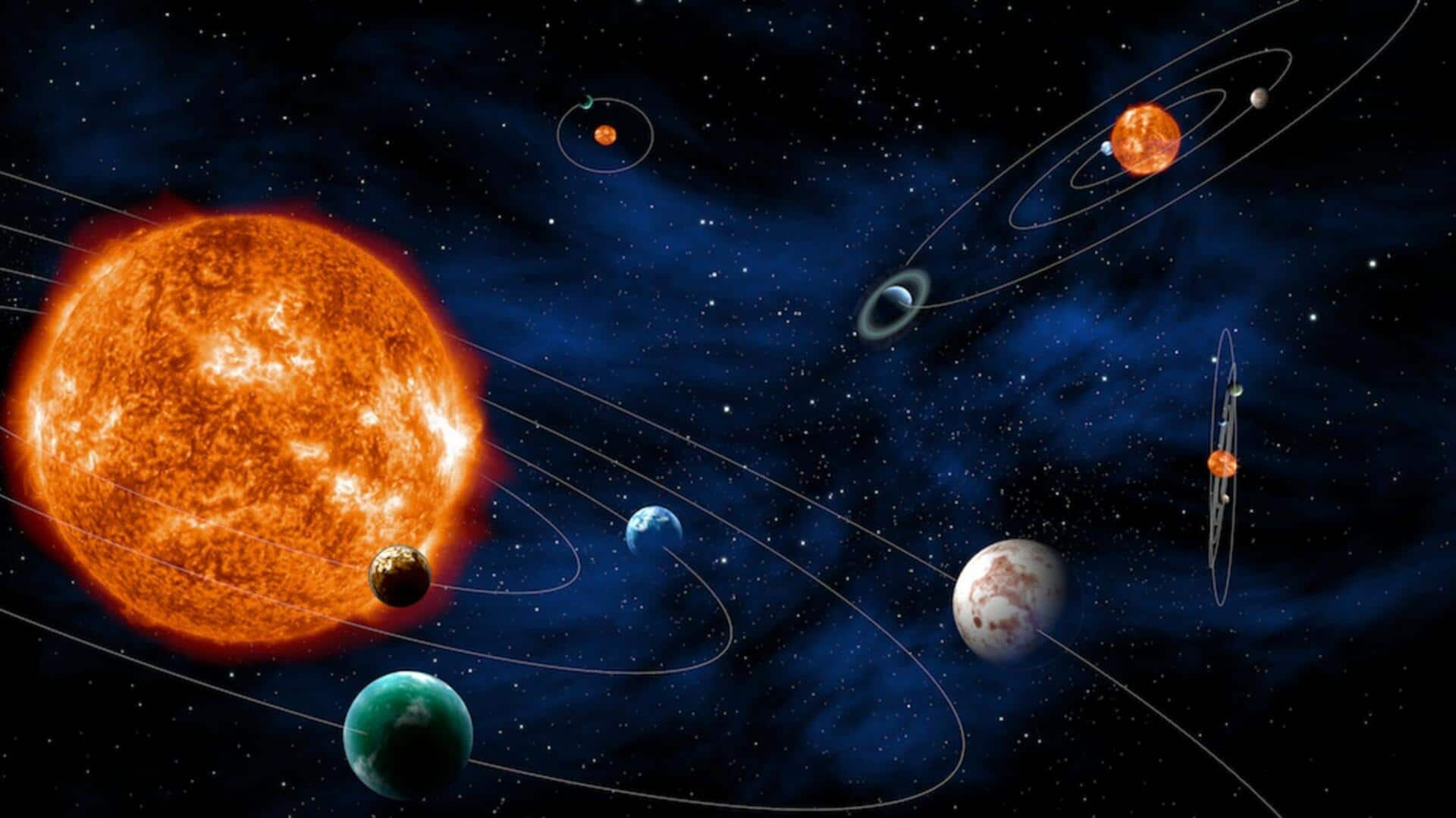
How ESA's PLATO mission will hunt for habitable planets
What's the story
The European Space Agency (ESA) will launch a new mission in 2026 that will hunt for exoplanets like no other. The PLATO mission, short for Planetary Transits and Oscillations of stars (PLATO), will scour for thousands of Earth-like planets, including some with favorable orbits around Sun-like stars. Now, a new study has indicated that PLATO could detect a minimum of 500 Earth-sized planets.
Context
Why does this story matter?
The hunt for exoplanets is set to reach new heights with the PLATO mission. The discovery of exoplanets has played an integral role in shaping our current planetary models. That understanding could be enhanced further as we find more alien worlds. From what we know, ESA's next-generation planet-hunting mission could be the most successful one ever built.
Study
The mission will look at over 2 lakh stars
Per the new study, to be published in the journal Astronomy and Astrophysics, PLATO could find tens of thousands of exoplanets. PLATO will look for more than 2,45,000 F, G, and K-type stars. The study points out that the mission, depending on several parameters, could identify a minimum of 500 Earth-sized planets. Of these, at least a dozen could orbit G-type (Sun-like) stars.
Instrument
How did researchers arrive at the estimate?
Researchers arrived at the number of exoplanets PLATO could find based on a tool they developed called Planet Yield for PLATO estimator (PYPE). This tool takes into account a statistical approach with occurrence rates from existing planet formation models along with data obtained by the Kepler space telescope. By knowing how many Earth-like planets PLATO will likely detect, scientists can determine its observation time.
Method
The mission will rely on the transit method for investigations
PLATO will specifically use the transit method to characterize potential Earth-like planets. "When the planet is in front of the star, it obscures an area on the stellar surface proportional to the ratio of its size compared to that of the star," explains ESA. In other words, once the star's size is known, scientists can directly measure the exoplanet's size as well.
Investigations
The study could help design how PLATO should conduct observations
Water is among the many clues that astronomers will be looking out for. It is essential for life on Earth and finding exoplanets with water will help narrow the search for worlds that could be habitable. The study also gives a realistic estimate of how many exoplanets PLATO could likely detect and thereby help astronomers decide how and where to direct the mission.
Significance
So far, 5,483 exoplanets have been confirmed to exist
Studies like the latest one provide crucial estimates that will be compared to observational data. By comparing how actual results vary from estimates, scientists can understand how common exoplanets are and how many habitable ones could exist. For reference, over the past two decades, we've seen a dramatic increase in exoplanet discoveries. As of July 2023, 5,483 exoplanets have been confirmed in 4,087 systems.